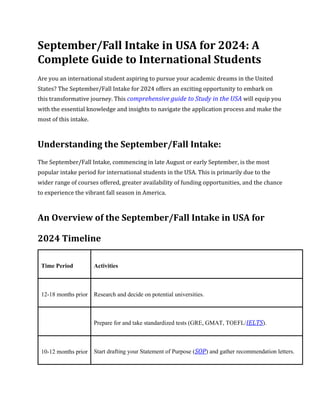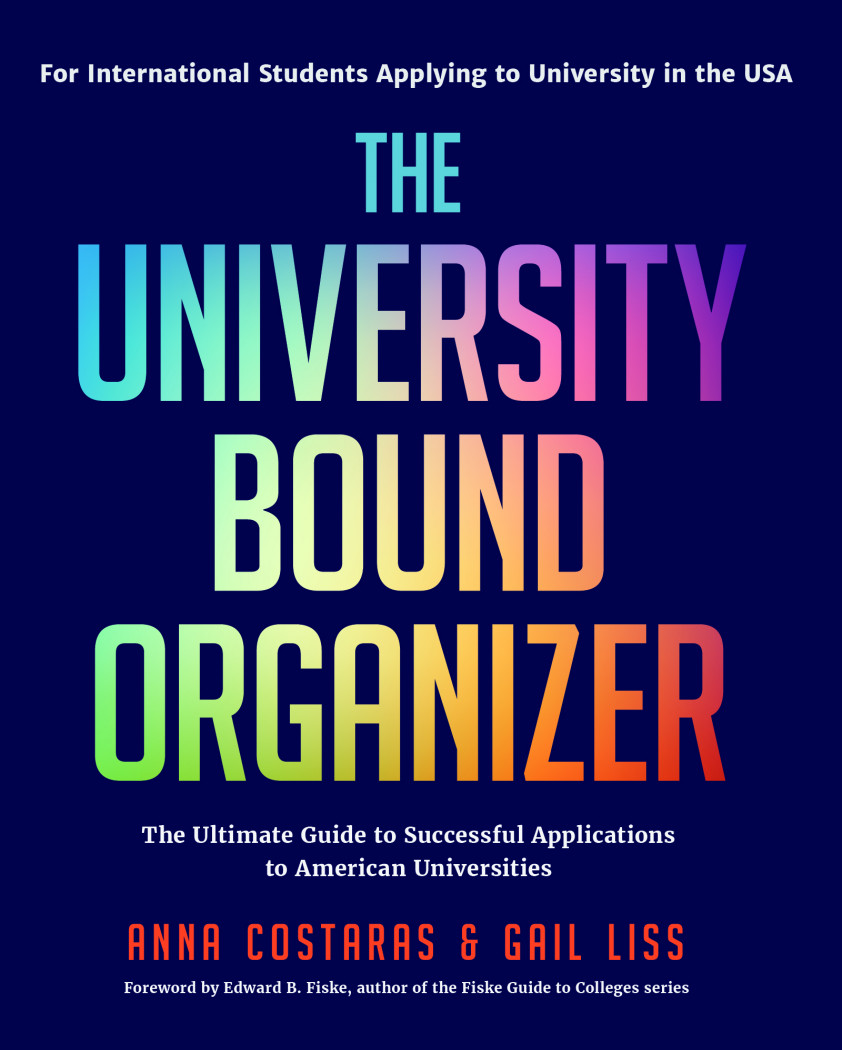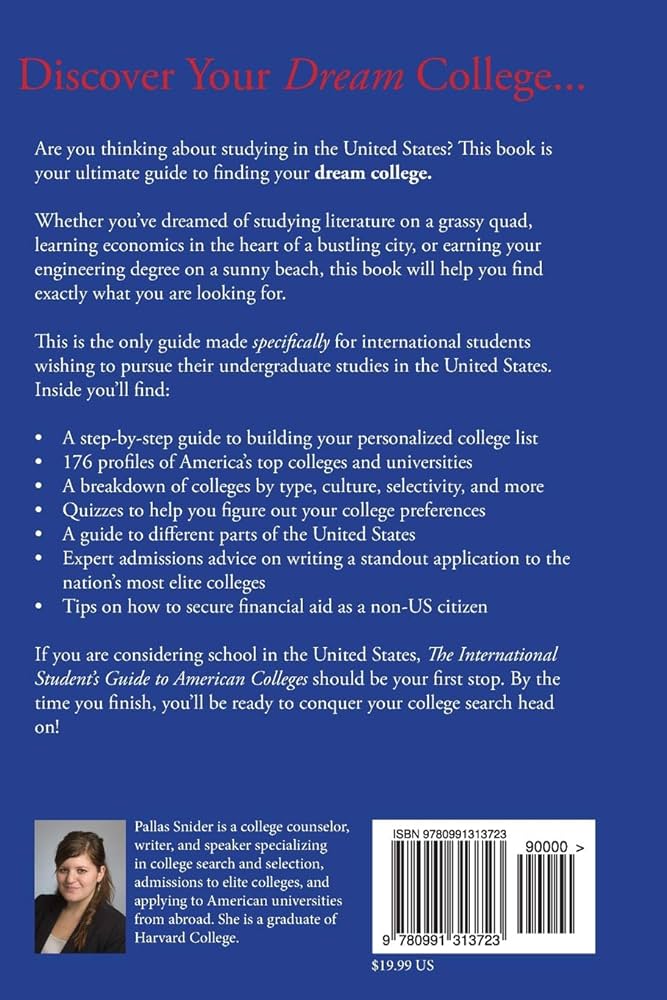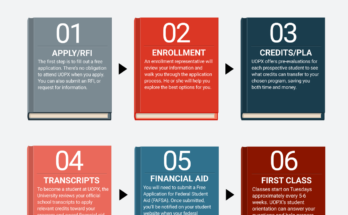The international student admission process in the USA involves submitting required documents and meeting eligibility criteria. For prospective students seeking admission to universities in the US, understanding the steps and requirements is crucial.
The process typically entails submitting academic transcripts, English proficiency test scores, letters of recommendation, and a well-crafted personal statement outlining the student’s goals and motivations. Additionally, students may need to demonstrate financial ability to cover tuition and living expenses. Consulting with designated officials or educational consultants can provide valuable guidance throughout the application process.
It is essential for international students to thoroughly research and prepare for each step to maximize their chances of gaining admission to their desired institutions in the US.

Credit: www.slideshare.net
Understanding The U.s. Education System For International Students
As an international student planning to study in the United States, understanding the U.S. education system is crucial. Familiarizing yourself with its key differences and selecting the right institution can greatly impact your academic journey.
Key Differences In U.s. Education System
Choosing The Right Institution
When pursuing higher education in the USA, it’s essential to consider the following key differences in the U.S. education system and factors for choosing the right institution:
- Academic Structure: The U.S. education system offers a flexible and diverse academic structure, including undergraduate and graduate programs, as well as various course options.
- Admission Requirements: Each institution has its own set of admission requirements, such as standardized tests, language proficiency exams, and application deadlines.
- Cultural Environment: Understanding the cultural diversity within the institutions and surrounding communities is important for international students.
When selecting the right institution, it’s crucial to research and consider factors such as academic programs, campus facilities, student support services, location, and potential career opportunities.

Credit: shorelight.com
Important Admission Requirements For International Students
Applying for admission to universities in the USA as an international student can be a daunting process. Understanding the important admission requirements is crucial to a successful application. Below, we outline the key criteria that international students need to fulfill:
Standardized Tests
Universities in the USA typically require international students to take standardized tests such as the SAT or ACT. These tests measure a student’s academic readiness for college and are an essential component of the application process.
Language Proficiency
English proficiency is a vital requirement for international students applying to US universities. Most institutions require students to demonstrate their language skills through standardized tests like TOEFL or IELTS. Achieving a good score on these exams is crucial for admission.
Navigating The Application Process
Applying to universities in the United States as an international student can be an exciting but also complex process. Navigating the application process requires careful planning and understanding of the steps involved. This section will guide you through two key aspects of the application process: preparing required documents and understanding deadlines.
Preparing Required Documents
Preparing the required documents is a crucial part of the international student admission process. Each university may have its own specific requirements, but there are a few common documents that you should gather:
- Transcripts: Request your official high school or college transcripts and have them translated if necessary.
- Standardized Test Scores: Depending on the university, you may need to submit scores for exams such as the SAT, ACT, or TOEFL.
- Letters of Recommendation: Reach out to your teachers or mentors and kindly ask them to write letters of recommendation on your behalf.
- Personal Statement/Essay: Craft a compelling personal statement or essay that showcases your unique experiences, aspirations, and motivation for studying in the United States.
By ensuring you have these documents ready, you will be well-prepared to complete the application process smoothly.
Understanding Deadlines
Understanding deadlines is essential to avoiding missed opportunities and ensuring your application is considered for admission. Universities in the United States typically have different types of deadlines, including early decision, early action, regular decision, and rolling admissions. It’s important to be aware of these deadlines and their implications:
| Deadline Type | Description |
|---|---|
| Early Decision | A binding agreement where you commit to attending the university if accepted. The deadline is usually in November or December, and decisions are released earlier. |
| Early Action | A non-binding option that allows you to apply early and receive a decision earlier than the regular decision deadline. The deadline is typically in November or December. |
| Regular Decision | The standard deadline for submitting applications. The deadline is usually in January or February, and decisions are released in April. |
| Rolling Admissions | A flexible deadline where applications are reviewed as they are received until all spots are filled. It’s advisable to apply as early as possible to increase your chances of admission, as spots may fill up quickly. |
Remember to carefully review the deadlines for each university you are applying to and plan your application timeline accordingly. Early preparation and submission will give you the best chance of being considered for admission.
Financial Planning For International Students
When it comes to planning for studying abroad in the USA, financial considerations play a crucial role. As an international student, it is important to understand the various aspects of financial planning that can impact your journey. This section will provide valuable information on tuition and living expenses, as well as scholarships and financial aid opportunities available to international students.
Tuition And Living Expenses
Understanding the costs associated with studying in the USA is essential for effective financial planning. Tuition fees vary depending on the institution and the degree program you choose. Additionally, you need to consider living expenses such as accommodation, meals, transportation, textbooks, and health insurance.
It’s important to research and compare the tuition fees of different universities to find the one that fits your budget. Some universities offer lower tuition fees compared to others, allowing you to save on educational expenses. In terms of living expenses, creating a budget is crucial to manage your finances effectively. Consider factors like housing options, meal plans, and transportation costs to estimate your monthly expenses.
Scholarships And Financial Aid
Fortunately, there are various scholarships and financial aid opportunities available to international students studying in the USA. Scholarships are merit-based and are awarded to students with exceptional academic achievements or talents. Financial aid, on the other hand, is based on financial need and can help cover a portion of your tuition fees or living expenses.
It’s essential to explore scholarship and financial aid options offered by universities, government agencies, private organizations, and foundations. Conduct thorough research and find out the eligibility criteria and application deadlines for each scholarship or financial aid program. Prepare the necessary documents and submit your applications well in advance to maximize your chances of receiving funding.
Additionally, some universities offer work-study programs that allow international students to work part-time on campus to cover their expenses. These programs not only provide a financial boost but also offer valuable work experience within the university community.
| Scholarship | Eligibility Criteria | Application Deadline |
|---|---|---|
| ABC Scholarship | Minimum GPA of 3.5 | March 31 |
| XYZ Grant | Financial need | May 15 |
| 123 Fellowship | Research-based | February 28 |
Tips for Financial Planning:
- Research and compare tuition fees of different universities.
- Create a budget that includes all living expenses.
- Explore scholarship and financial aid options.
- Submit applications well in advance.
- Consider on-campus work-study programs.
By carefully considering the financial aspect of your international student journey, you can better plan and ensure a smooth transition to your academic pursuits in the USA. Remember to be proactive and take advantage of the available scholarships and financial aid options to alleviate the financial burden.
Student Visa Application Process
One important aspect of the international student admission process in the United States is obtaining a student visa. Understanding the student visa application process is crucial for prospective international students who wish to study in the US. This section will guide you through the different types of student visas, as well as the application procedures to ensure a smooth transition to studying in the US.
Understanding Visa Types
Before starting the student visa application process, it is essential to understand the different types of visas available for international students. The most common types of student visas in the US are the F-1 visa and the J-1 visa.
The F-1 visa is the most common type of student visa and is suitable for international students who plan to pursue academic studies in a US university or college. It requires the student to maintain full-time enrollment and allows for limited employment opportunities on or off-campus.
The J-1 visa, on the other hand, is mainly meant for students participating in exchange programs, such as research or study at an accredited US institution. This visa aims to promote cultural exchange and requires students to return to their home countries upon completion of their program.
Application Procedure
Once you have chosen the appropriate student visa type, it is crucial to follow the correct application procedure to ensure a successful outcome. Here’s a step-by-step guide:
- Gather the required documents – Ensure that you have all the necessary documents, including a valid passport, admission letter from a US institution, proof of financial support, and the SEVIS I-20 form for F-1 visas or DS-2019 form for J-1 visas.
- Pay the SEVIS fee – Before you can apply for a student visa, you must pay the SEVIS (Student and Exchange Visitor Information System) fee. It can be done online through the official SEVIS website.
- Complete the online visa application – Fill out the online nonimmigrant visa application (Form DS-160) and submit it. Make sure to provide accurate and updated information.
- Schedule your visa interview – After completing the online application, schedule an appointment for a visa interview at the US embassy or consulate in your country. It is essential to book the interview well in advance to secure a suitable appointment date.
- Prepare for the interview – Gather all the necessary documents required for the interview, such as the appointment letter, passport, visa application fee receipt, SEVIS fee payment confirmation, academic transcripts, and proof of ties to your home country.
- Attend the visa interview – On the scheduled date, attend the visa interview at the designated embassy or consulate. Answer the consular officer’s questions honestly and confidently, providing any required documents when asked.
- Wait for visa issuance – If your visa application is approved, the consular officer will issue your student visa. The time it takes to receive your visa may vary, so it is essential to stay updated on the status of your application.
By following these steps and adhering to the specific requirements for your chosen visa type, you can successfully navigate the student visa application process in the US. Remember to consult official government websites for the most up-to-date and accurate information to ensure a smooth and hassle-free experience.
Transitioning To Campus Life In The U.s.
Transitioning to Campus Life in the U.S.
Cultural Adjustment
Adapting to a new culture can be challenging for international students. It can involve understanding social norms, communication styles, and cultural traditions. Cultural adjustment is an essential process that involves embracing diversity and respecting different perspectives.
Support Services For International Students
Universities in the U.S. provide a wide range of support services for international students to ease their transition into campus life. These may include orientation programs, language assistance, counseling services, and international student organizations.
Working As An International Student In The U.s.
As an international student studying in the United States, it’s essential to understand the various opportunities available for employment during your stay. From on-campus jobs to Optional Practical Training (OPT), here’s a comprehensive guide to working as an international student in the U.S.
On-campus Employment
On-campus employment can provide valuable work experience while allowing international students to earn a modest income. Students on F-1 visas are eligible to work on campus for up to 20 hours per week during the academic year, and full-time during scheduled breaks.
To engage in on-campus employment, students must obtain approval from their designated school official and ensure that the job is related to their field of study.
Optional Practical Training (opt)
Optional Practical Training (OPT) is an employment authorization allowing F-1 students to gain hands-on experience in their field of study. It can be utilized before or after completion of the academic program and is typically granted for a maximum of 12 months.
Students are required to apply for OPT through the U.S. Citizenship and Immigration Services (USCIS) and obtain work authorization before commencing employment. OPT provides an opportunity to apply classroom learning to practical work scenarios in the U.S. job market, enhancing students’ professional development.

Credit: mango.bz
Maintaining Legal Status And Compliance
As an international student in the USA, it’s crucial to comprehend the immigration rules and regulations that govern your stay.
International students must adhere to reporting obligations to maintain legal status in the US.
Frequently Asked Questions For “international Student Admission Process Usa”
Q: How Can International Students Apply For Admission In The Usa?
A: International students can apply for admission in the USA by researching universities, fulfilling admission requirements, submitting applications, providing necessary documents, and demonstrating proficiency in English language skills.
Q: What Are The Requirements For International Students To Study In The Usa?
A: Requirements for international students to study in the USA typically include proof of English language proficiency (such as TOEFL or IELTS scores), academic transcripts, standardized test scores (such as SAT or ACT), letters of recommendation, and a completed application form.
Q: Are International Students Eligible For Financial Aid In The Usa?
A: International students in the USA may be eligible for financial aid through scholarships, grants, or part-time work opportunities on campus. However, most forms of federal financial aid are typically available only to U. S. citizens or permanent residents.
Q: What Is The Application Timeline For International Students Applying To Us Universities?
A: The application timeline for international students applying to US universities may vary, but generally, it is advisable to start the application process at least one year in advance. This allows time for research, test preparation, gathering documents, and meeting application deadlines.
Conclusion
Navigating the international student admission process in the USA can lead to fulfilling opportunities. With proper guidance and preparation, you can smoothly transition into studying abroad. Consult trusted resources like GreenCardEZ to make informed decisions and ensure a seamless application process.
Your academic journey awaits!


